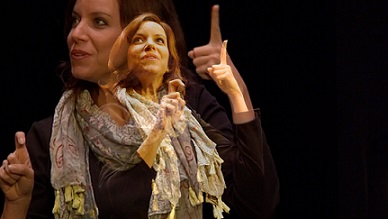Disrespected Literature and Sign Language
DOI:
https://doi.org/10.13130/2035-7680/12358Parole chiave:
sign language; sign language literature; deaf literature; disrespected literature; embodied poetryAbstract
The study of hitherto “disrespected literature” makes us look at all language in a new way, revealing the potentialand limitationsof language, creativity and humanity. I argue that sign language literature, or , as it is called in one sign language, as an example of disrespected literature, can reveal new ways of thinking about literature, literary analysis and language, as well as highlighting the relationship between language art and the body of the language artist. I discuss the paradox that academic acceptance ofand respect forthe new literary cultural norms may compromise those norms, as canons are created, conveying institutional status and risking the cultural norms of the community that created it. Disrespected literature brings into focus the relationship between language, the body and identity.
The essential corporal nature of sign language can powerfully express Embodied Political Resistance to prevailing disrespect. Thus, when we respect the sign language literature of a deaf culture, we respect the language, the body and the person.




